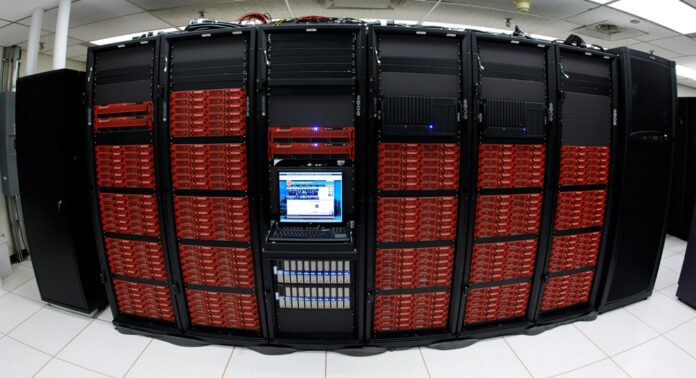Science and research represent the pursuit of knowledge that has propelled humanity forward. Currently, those who dedicate their lives to this quest — our scientists, researchers, and problem-solvers — are being asked to achieve the impossible: to advance human understanding without the essential tools needed. This situation is not merely a challenge—it’s an outrage.
Recent shifts in federal research funding have left institutions across the country uncertain about the future of their high-performance computing (HPC) clusters. These are the very tools that power groundbreaking discoveries, from life-saving medical research to climate modeling to artificial intelligence. Yet today, researchers face budget cuts, suspended grants, and institutional indecision about whether they’ll have access to the computing power they need to do their jobs.
That is not how a nation at the forefront of scientific discovery treats its best and brightest. That is not how progress is made. That is, unless they have a solution designed to cut through the noise, bureaucracy, and budgetary chaos and provide scientists with instant, cost-effective access to high-performance computing independent of institutional red tape or shifting federal priorities.
When the fate of scientific discovery is at stake, we don’t hesitate—we act. You may believe that we are overstating the stakes of the current environment, but the short-term chaos will have long-term consequences for researchers. Not achieving their research objectives today will derail progress for decades, especially in critical fields like cancer research, AI, and environmental sciences.
The Challenge: Uncertainty in Research Infrastructure

High-performance computing is not a luxury. It’s the foundation of modern research that powers the simulations, the modeling, and the data analysis that drive innovation. Critically, it powers AI. And yet, maintaining HPC clusters has become a financial burden that institutions are struggling — or outright failing — to sustain. Several large, bedrock national institutions we surveyed have less than 10 modern HPC nodes to serve thousands of researchers. With AI infrastructure in such high demand, these institutions are falling woefully behind in serving the needs of their researchers. While they are falling behind, their funding sources are drying up due to the upheaval in public policy.
Here’s what’s happening:
- Grant Suspensions: The NIH and NSF have delayed or halted funding, causing research institutions to collapse and forcing scientists to postpone crucial work.
- Caps on Indirect Costs: A new 15% cap on indirect costs means universities must scrounge for ways to keep vital research infrastructure running, including high-performance computing.
- Layoffs and Budget Cuts: Reduced funding leads to painful decisions, such as staff reductions, diminished IT support, and researchers being forced to scramble for alternative solutions. Researchers have historically had limited IT support. Now they have no IT support.
For the people on the front lines of discovery, this isn’t just an inconvenience—it’s an existential threat to their work. When scientists lose access to the computational power they need, the progress of an entire field can grind to a halt. That is unacceptable.
The Best Ally Researchers Could Ask For

Modern scientific researchers do not require a stopgap. Nor do they need a compromise. Researchers who refuse to let bureaucratic gridlock stand in the way of discovery need a lifeline.
Here’s how such a tool can level the playing field:
1. Direct Access to Computing Power—No Red Tape, No Excuses
Instead of waiting on institutional funding committees to determine their fate, researchers could have immediate access to high-powered GPUs like NVIDIA A100s and H100s. The best tools in the world, ready to work the moment they’re needed.
With a tool that offers a pay-as-you-go model, researchers don’t have to mortgage their future in the hope that the next budget cycle will be kinder. They can buy what they need, when they need it, ensuring their work continues uninterrupted.
2. Science First: Seamless Integration with Research Tools
Imagine a tool for researchers that integrates directly with JupyterLab, Visual Studio Code, Google Colab, and other research environments. This means no wasted time reconfiguring workflows or IT headaches—just pure computing power, immediately available where and when it’s needed.
3. Institutional Overhead? Not Here
Maintaining an HPC cluster is expensive. It’s complicated. It diverts attention and resources from where they should be—on research. Institutions grappling with budget shortfalls can relieve themselves of that burden with a solution that provides cost-effective and immediate access to HPC clusters free of bureaucratic red tape or funding bottlenecks.
That means:
- No massive capital expenditures on hardware.
- No IT staff scrambling to keep outdated systems running.
- No administrative meetings debating how to allocate dwindling funds.
Just researchers, doing their work, unencumbered by institutional roadblocks.
4. A Solution for a Fractured Research Landscape
Research isn’t done in isolation. The best work comes from collaboration — often across multiple institutions — but disparities in access to computing resources have made collaboration harder than ever.
With an on-demand tool that offers group-based computing access, research teams can share computational resources without being tethered to a single institution’s financial health. If one university is struggling, it doesn’t mean the whole project has to stop. That’s how progress is made.
5. Flexibility in a Time of Uncertainty
The most dangerous thing about today’s funding landscape isn’t just that it’s difficult—it’s that it’s unpredictable. Funding priorities shift. Policies change. Entire research programs are upended overnight.
By providing researchers with a tool built on an on-demand model, we can ensure that no researcher is at the mercy of Washington’s next budget battle. If funding is available, great—scale up; if it’s tight, no problem—scale down. Either way, research continues.
The Urgency of Now: AI Innovation and the Need for Research Diversity

And let’s be very clear: This is not just about research budgets. This is about who gets to shape the future. AI is evolving at breakneck speed, and if we’re not careful — if we don’t act right now — we will wake up in a world where AI innovation is dictated solely by a handful of corporate giants.
Right now, OpenAI, Meta, Microsoft, and Amazon have the computational resources to push AI forward at an astonishing pace. And that’s fine, but if academic institutions and independent researchers don’t have access to similar resources, then the AI revolution will be shaped entirely by the priorities of a few influential players. And if that doesn’t concern you, it should.
Diversity of thought drives innovation. The best breakthroughs don’t come from monopolies. They come from diverse perspectives—university research teams, government-backed initiatives, and independent scientists tackling problems that private industry might ignore. We must ensure that AI development remains democratic and isn’t dictated by the balance sheets of the biggest tech firms.
Without access to high-performance computing, we are ceding the future of AI innovation to a select few. And that is not an acceptable outcome.
The Bottom Line: Science Demands Action
The United States leads the world in scientific research. Our universities, national labs, and researchers are the best in the world. And yet, we are asking them to fight through financial and bureaucratic obstacles that make their jobs exponentially harder.
Project Robbie is the best way forward. It’s an on-demand, cost-effective tool that ensures science continues, research is not derailed, and innovation is not left in the hands of a few corporations.
Scientific progress must continue now, not next year or after the next budget cycle. Science does not wait, and neither should we.









